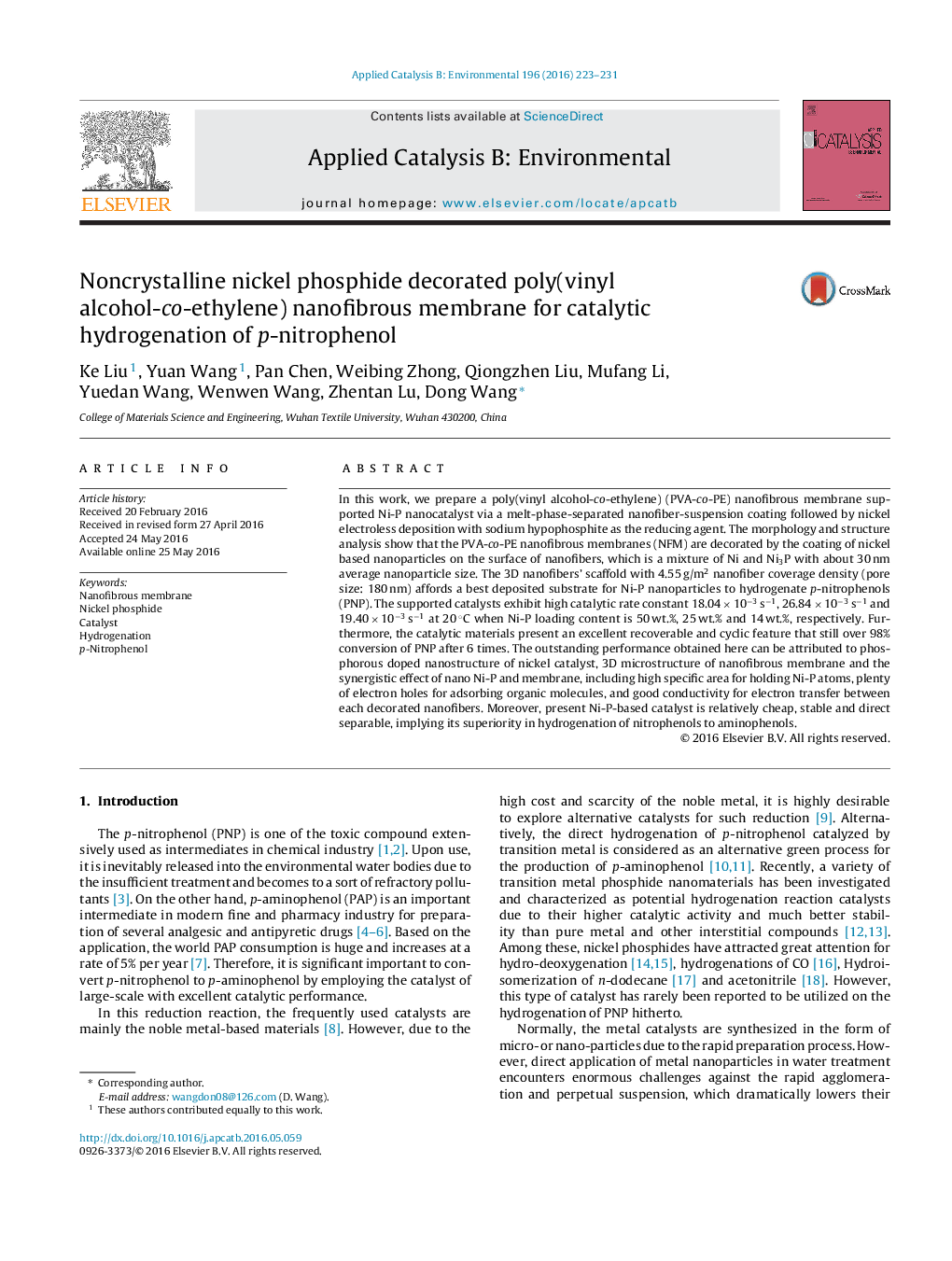| Article ID | Journal | Published Year | Pages | File Type |
|---|---|---|---|---|
| 44988 | Applied Catalysis B: Environmental | 2016 | 9 Pages |
•PVA-co-PE nanofibrous membrane supported noncrystalline Ni-P was prepared.•Rate constant of Ni-P0.25/NFM4.55 is 26.84 × 10−3 s−1 at 20 °C for hydrogenation of PNP.•Ni-Px/NFM4.55 (x = 0.25, 0.50) present cyclic PNP conversion over 98% after 6 times.•3D nanofibrous membrane is confirmed to influence greatly the catalytic reaction.•This catalysis is determined by the synergistic effect of Ni-P and NFM structures.
In this work, we prepare a poly(vinyl alcohol-co-ethylene) (PVA-co-PE) nanofibrous membrane supported Ni-P nanocatalyst via a melt-phase-separated nanofiber-suspension coating followed by nickel electroless deposition with sodium hypophosphite as the reducing agent. The morphology and structure analysis show that the PVA-co-PE nanofibrous membranes (NFM) are decorated by the coating of nickel based nanoparticles on the surface of nanofibers, which is a mixture of Ni and Ni3P with about 30 nm average nanoparticle size. The 3D nanofibers’ scaffold with 4.55 g/m2 nanofiber coverage density (pore size: 180 nm) affords a best deposited substrate for Ni-P nanoparticles to hydrogenate p-nitrophenols (PNP). The supported catalysts exhibit high catalytic rate constant 18.04 × 10−3 s−1, 26.84 × 10−3 s−1 and 19.40 × 10−3 s−1 at 20 °C when Ni-P loading content is 50 wt.%, 25 wt.% and 14 wt.%, respectively. Furthermore, the catalytic materials present an excellent recoverable and cyclic feature that still over 98% conversion of PNP after 6 times. The outstanding performance obtained here can be attributed to phosphorous doped nanostructure of nickel catalyst, 3D microstructure of nanofibrous membrane and the synergistic effect of nano Ni-P and membrane, including high specific area for holding Ni-P atoms, plenty of electron holes for adsorbing organic molecules, and good conductivity for electron transfer between each decorated nanofibers. Moreover, present Ni-P-based catalyst is relatively cheap, stable and direct separable, implying its superiority in hydrogenation of nitrophenols to aminophenols.
Graphical abstractFigure optionsDownload full-size imageDownload as PowerPoint slide
